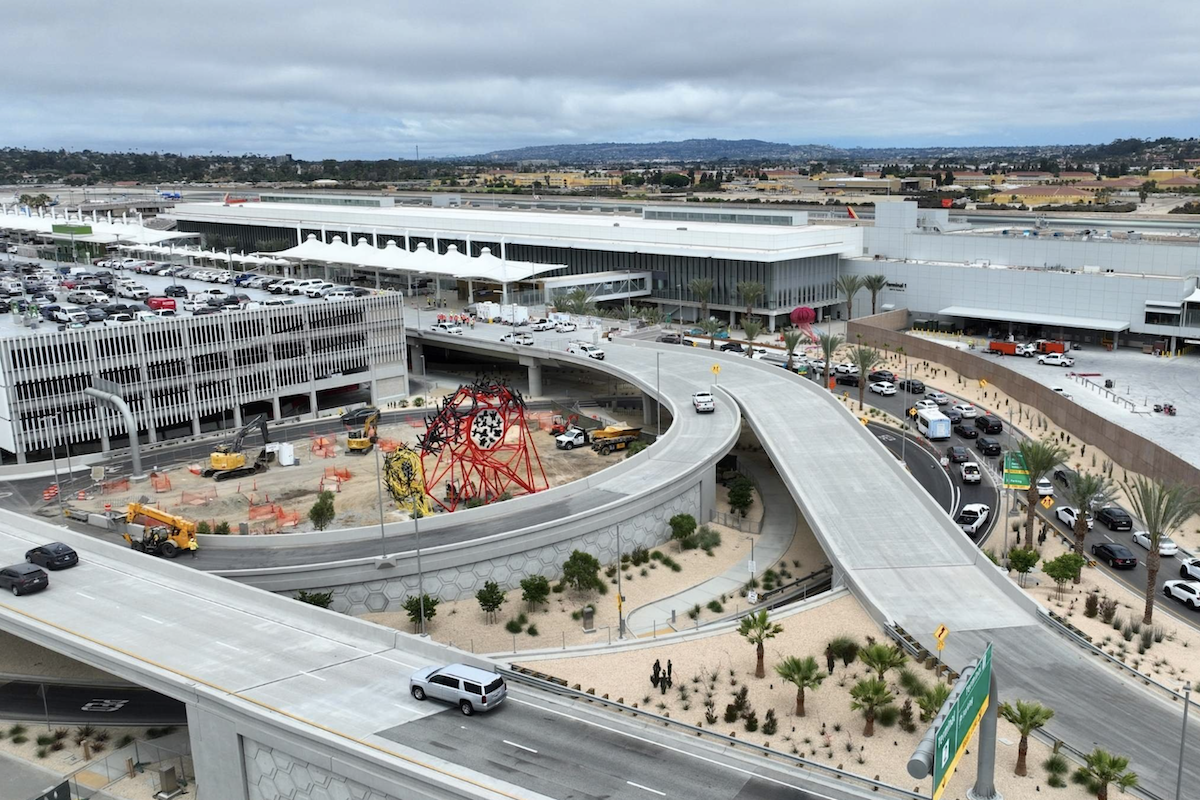Since major construction began in July 2020, each of the project's grade crossings has undergone one or more long-term closures to allow crews time to relocate and protect underground utilities, install new safety equipment, relocate the freight track that initially sat in the middle of the now-shared rail corridor, install new light rail tracks, and build new medians, sidewalks, curbs/gutters, and roadway. At the grade crossings with new light rail bridges, each underwent similar reconstruction activities underground and above, but only included installation of the relocated freight track at-grade (the light rail tracks will be built on top of the newly-finished bridge structures that are grade-separated at these locations for safety, as required by the California Public Utilities Commission).
"With the grade crossing reconstruction work behind us, the most impactful activities for the community, and the most risky activities for an on-time project delivery, are behind us," said Foothill Gold Line Board Chairman, Claremont Mayor Ed Reece. "Thanks to everyone's hard work, the project remains on budget and on schedule for substantial completion in early January 2025."
Each grade crossing reconstruction was a significant undertaking, beginning with months of careful planning, design, and coordination to ensure the multiple entities involved were ready to go to work once the street was closed; often requiring multiple crews working alongside each other or scheduled one right after the other to reduce the closure timeline as much as possible. Additionally, each street closure also required extensive outreach to notify affected neighbors and area stakeholders. Before each street closure, a specific outreach plan was developed to ensure all affected stakeholders would be aware of the upcoming closure well in advance, so they could make alternative plans. Outreach was conducted door-to-door, via email, on social media, through traditional media, and with navigational apps like Waze and Google Maps.
"Reaching this milestone took extensive planning and expertise by the Construction Authority team and KPJV, our contractor, to coordinate and schedule the hundreds of activities needed at each crossing so they would be completed as efficiently as possible," said Construction Authority CEO, Habib F. Balian. "Each crossing had to undergo substantial reconstruction, requiring weeks, and in some cases months, of full closures. We thank the corridor cities for their support during this impactful work, as well as the community for their patience and understanding."

| Your local Trimble Construction Division dealer |
|---|
| SITECH Southwest |
| SITECH West |
Overall, the Glendora to Pomona project is now 68 percent complete. The Construction Authority and KPJV anticipate completing the majority of all major construction activities needed for the project in 2023; with testing of the system to start by the end of the year. In June, the agency expects to finish the light rail track installation and will hold a milestone ceremony to celebrate that achievement on June 24, 2023, in the city of La Verne.
The Foothill Gold Line Construction Authority completed the first segment from Union Station to Pasadena in 2003 and the Pasadena to Azusa segment in 2015. The agency began work on the Glendora to Montclair segment in 2003. The Glendora to Montclair segment was environmentally cleared in March 2013 under CEQA and again in 2019 to allow the potential for phased construction. Major construction on the project segment from Glendora to Pomona began in July 2020 and is on schedule to be completed in early January 2025. When completed, the project will add new light rail stations in the cities of Glendora, San Dimas, La Verne, Pomona, Claremont and Montclair.
The current construction segment is funded mostly by Los Angeles County's Measure M, along with residual funds from Measure R not used to complete the Pasadena to Azusa segment. The State of California has also provided a greenhouse gas reduction grant to support the project.

































































